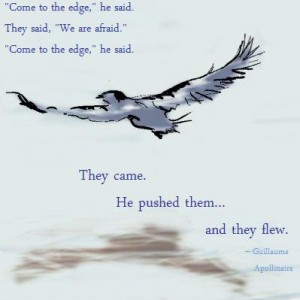This article continues an earlier post entitled, Wordiness Is Not a Style – Part 1. If you haven’t yet read the first article, please do so before continuing here.
I focus this post on one of the High Commandments of writing: Make Every Word Count. If you’ve been studying this craft, through creative writing courses or any of the hundreds of books on writing, you’ve already seen this admonition many times. Indeed, ghosts of Writing Instructors Past probably sound the drumbeat in your subconscious every night whilst you dream of cannibals stalking you through the jungle.
Yet for most writers, wordiness remains an anchor on the ship of prose.
Why is “Make Every Word Count” such a critical commandment? It’s simple: words are money. For print publishers, a higher word count equals more printing. For electronic publishers, a higher word count means more server space and/or bandwidth. For readers, a higher word count means more of their precious time is required to complete the piece. Please, Dear Writer, show a little respect for those who support your business.
On top of everything else, wordiness is just plain bad, lazy, dull writing. It typically revolves around what I call “The 3 R’s of Wordiness.”
Redundancy: Not only is this boring and unnecessary, it’s rather insulting. When you tell a reader the exact same thing in two or three different ways, she may respond by saying, “Geez, what is it with this author? Does he think I’m an idiot? I get it, already.”
Repetition: This signals the reader that you’re running out of things to say, so you just say the same thing over and over. Gee whiz, that makes for an exciting read.
Rambling: When you run on and on and on, the reader knows that you’re lazy, at best, disrespectful of her time and energy, or that, at worst… well, that you shouldn’t quit your day job.
We writers often fail to recognize wordiness when we see it. We so focus on this sentence, this word, that we’ve already forgotten the last sentence. Is it any wonder, then, that we fall victim to The 3 R’s? Additionally, our writing tracks with our speech mannerisms. Yikes! When’s the last time you heard someone utter a gem such as this: “Like, have you guys like seen that like totally amazing movie about like androids and robots and stuff? It’s like, you know, so totally awesome that like, whatever, it’s just cool and like totally awesome.”
Okay, so maybe you’re not that bad. The point is that our speech leans heavily toward the lazy, improper, garbled, repetitive and disjointed. Your writing must not. Even if you speak as though you stayed awake in high school English, and you have an IQ over 73, you still allow nagging “errors” to creep into your speech. We all do.
Sorry to be the bearer of bad news, but the default voice with which you write is the one with which you speak. To break those chains, you must self-edit at the deepest possible level—every sentence, every word. More than that, you must turn off that natural conversational voice in your head. A funny thing will happen as your writing tightens-up and improves: so will your speech. You will find that happy, comfortable medium. It just takes time.
Finally, you must rely on your editor to bring objectivity and a fresh perspective, to catch what your subconscious mind allows to slip past your blinded self.
HIGH PRAISE for HIGH PROSE
Our quest for this often leads us down the path of wordiness. Writers often seek to elevate their prose, to foment literary bliss, and I applaud the inclination; however, too many confuse quantity for quality. Elevated prose consists not of more words, but of better words better formed. The pithiest way of saying something may well be the most elegant, whereas the complex bag of wind can be absolute torture.
I offer this example from a piece I edited long ago. I shall change the character names and keep confidential the author and title. — The inner glow of warmth and compassion Fred initially believed to live behind Barney’s gray eyes, blazed fiercely with an entirely different meaning for Betty, or so it seemed to Fred, and in Betty’s attachment to Barney, she lost the capability to manifest emotion toward anyone else. — Oh brother! That bogged me down several times, but I found the final segment the most amusing—and by amusing, of course, I mean terrible. That one 47-word sentence should be two sentences totaling 25-30 words. I offer no alternatives because—Good grief!—the writer just needs to go back to the drawing board. “…the capability to manifest emotion toward….” Seriously?
Dear Writer, pith is not your enemy. Pith is your friend. It will not preclude you from writing high prose; indeed, it will aid you in that endeavor. Do not confuse “pith” with “simple.” Use moving, compelling, evocative words and phrases, of course. But get to the point!
I believe examples offer the best method for learning to recognize and destroy wordiness—simple, repetitive exercises. Therefore, I shall focus an upcoming article on actual examples and their preferred alternatives, providing a series of “before” (read “bad”) and “after” (read “better”). It won’t be long—a couple of days, a week at most—so tune in again soon.
‘Til next time, and as always, remember: To write well, you must work hard. To succeed in this tough gig, you mustn’t be lazy (or discouraged).
———-





Please follow me here: